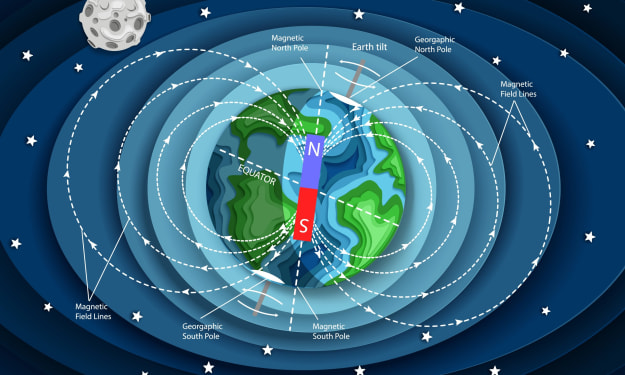Earth's Disaster History
Most Unusual Natural Disasters in Earth's History

Between 774 and 775, Earth experienced a colossal radiation burst, evidenced by extremely high levels of radioactive carbon and beryllium found in tree rings from that period. This unprecedented event has puzzled scientists for years. The leading theory attributes this radiation spike to a solar flare, although some speculate it could have been a massive supernova. However, astronomer Phil Plait points out that such a supernova must be less than a thousand light-years away and exceptionally bright. Yet, there are no historical records of such an event.
After extensive analysis of the radioactive carbon and beryllium in the tree rings, scientists have ruled out several potential causes. Initially, they considered the possibility of a collision between neutron stars or a neutron star and a black hole, which can produce quick gamma-ray bursts without visible light. Despite this alignment with the evidence, such collisions are extremely rare, occurring approximately once every million years in our galaxy. Thus, having one just 1,200 years ago seems unlikely.
The concern surrounding these rare cosmic events is their potential impact on Earth. If one occurred closer to our planet, it could disrupt life significantly, even from thousands of light-years away. Modern electronic systems would be particularly vulnerable, causing widespread chaos. Fortunately, these gamma-ray bursts are rare, sparing Earth from frequent catastrophes.
Another peculiar natural disaster occurred in the summer of 1874 in Kansas when a massive locust invasion swept across the Great Plains. These swarms blanketed everything, causing immense destruction. Farmers struggled to protect their crops, livestock, and possessions as the locusts stripped paint off wagons and wool off sheep. The damage was estimated at around $200 million. The situation was so dire that the U.S. Army had to intervene. Eventually, the locusts vanished, but not before leaving a trail of devastation.
Natural disasters can be both unexpected and varied. In June 2017, a reindeer herder in Northwest Siberia witnessed a dramatic explosion followed by a massive hole in the ground, measuring 23 feet wide and nearly 65 feet deep. This mysterious phenomenon turned out to be one of over 17 such craters in the area. Initially thought to be sinkholes, secret tests, or meteorites, the prevailing theory now suggests these craters are caused by the thawing Arctic releasing trapped gas pockets. As the ground warms, these gas pockets burst, creating explosive craters.
In 536 AD, the world experienced an eerie 18-month period of darkness, covering Europe, the Middle East, and parts of Asia. A mysterious fog blocked out the sun, leading to plummeting temperatures and widespread crop failures. Historians documented the bizarre conditions, describing the sun as dim and summers as freezing cold, with even reports of summer snow in China. The culprit was a volcanic eruption in Iceland that spread ash across the Northern Hemisphere, triggering a global climate catastrophe and sparking the Bubonic plague in 541.
Returning to Siberia, the Tunguska event of 1908 remains one of the most famous asteroid impacts. A massive asteroid exploded over the remote wilderness, flattening trees and igniting fires over a vast area. Due to the remoteness of the site, it wasn't investigated until decades later, when scientists found evidence of the explosion and space debris. Today, NASA has developed planetary defense measures to detect and potentially deflect future asteroid threats.
One of the most significant solar storms occurred in the mid-19th century, known as the Carrington Event. This intense geomagnetic storm caused telegraph systems to fail and produced auroras as far south as the tropics. Such storms originate from sunspots and solar flares that release massive amounts of solar material. With the next solar maximum expected in 2025, it's essential to study past solar storms like the Carrington Event to prepare for potential future disruptions.
These historical natural disasters remind us of the unpredictable and sometimes devastating forces of nature. While some events are rare, their impacts can be profound, shaping our world and prompting us to develop better preparedness measures for the future.
About the Creator
Bayu Setyawan
Hallo, I am a sales representative at Samsung Electronics Indonesia, blending industry expertise and creativity to craft compelling stories, insightful articles, engaging content, and inspiring through powerful and captivating narratives!
Enjoyed the story? Support the Creator.
Subscribe for free to receive all their stories in your feed. You could also pledge your support or give them a one-off tip, letting them know you appreciate their work.






Comments
There are no comments for this story
Be the first to respond and start the conversation.